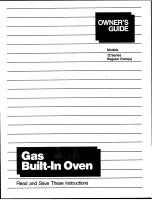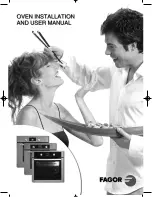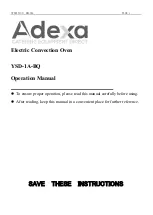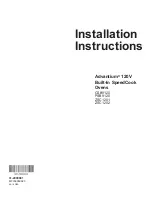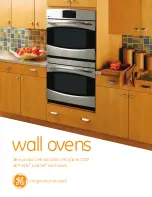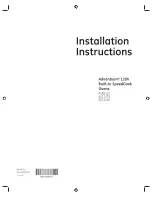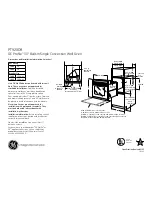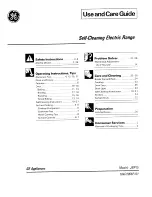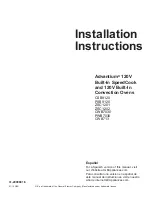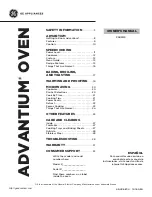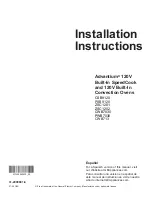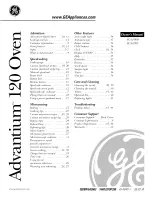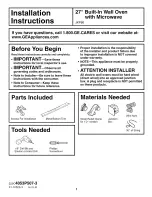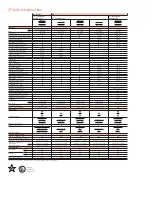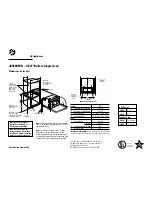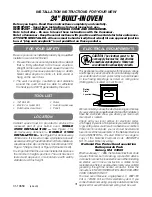
4
Draught is caused by the rising hot air in the flue when the fire
has been lit.
The position, height, and size of the flue can affect the
performance of the flue draught. Refer to the installation
guide for details on the flue installation.
Factors affecting the flue draught include:
Insufficient flue height
Trees or other buildings nearby causing turbulence
High and gusty winds
Outside temperature and weather conditions
Blocked flue
For advice on the correction of the persistent flue, problems
consult your supplier/installer for more detail.
Depending on the type of wood burnt and frequency, the
ashes will need removing every 2 to 6 weeks.
Leave a 10mm layer of ash to insulate the firebox bottom.
Excess ashes should be removed when necessary, placed in a
non-combustible container with a tightly fitting lid, and
moved outdoors immediately to a location clear of
combustible materials.
1)
Remove the baffle plate (refer to ‘Replacing the Baffle
Plate’ under Maintenance & Servicing).
2)
Hold a small mirror on an angle below the flue, with a
torch shining towards it, and look for black creosote
build-up. It is normal to see a fine black powdery layer,
but if built-up layers of creosote can be seen, the flue
requires cleaning.
3)
If no cleaning is required, refit the baffle plate.
To clean the flue:
1)
A flue cleaning brush can be purchased from most wood
heater retail outlets or large hardware stores.
Alternatively, hire a flue cleaning service to do the job for
you (it’s a dirty job).
2)
With the baffle plates removed, tie a rope to one end of
the brush, and drop the rope down the flue (from outside
on top of the roof).
3)
Grab the end of the rope from inside the firebox and pull
the brush down through the flue.
4)
Check the inside of the flue with the mirror and torch.
5)
Repeat the cleaning process if necessary.
6)
Once the flue is clean, remove any excess creosote from
the firebox.
7)
Replace the baffle plate.
Only pull the brush downwards through the flue, as pulling
upwards may separate the flue sections at their joins.
If a flue/chimney fire occurs:
Shut air controls fully to smother the fire.
Do not use the appliance after a flue fire until an
accredited installer has assessed the cause and any
resultant damage.
The appliance, when cold, can be cleaned with a damp
cloth.
Over the years, the black paint will fade and can be
touched up with Stove Bright metallic black paint.
To clean the glass, use a dampened newspaper with
ash or a non-caustic oven cleaner. Do not use a
cleaner that contains caustic chemicals
Do not use an abrasive cleaner or scourer pads.
Check inside of the flue prior to each season for any build-
up of creosote (wood tar).
To check the flue:
Glass indoor blackening
This can have several possible causes:
Burning unseasoned wood — If the wood is too wet, it
will cause the glass to blacken.
Appliance operated at low temperature — After an
overnight burn where the air control has been fully
closed, the glass may have blackened. When the fire is re-
stoked and burning on the high heat setting, the
blackened glass should self-clean.
Problems with the flue — Insufficient flue draught can
cause the glass to blacken. If the flue is too short, not
properly insulated, or in a position that results in a
downdraught, then there will be insufficient flue draught.
Contact the installer should this happen.
Trouble starting the fire
When cleaning, it is best to retain some ash in the base of the
firebox. A layer of ash insulates the base, helping to maintain
a high temperature for combustion. Also, if all the ash has
been removed from the firebox, it can affect the supply of air
to the base of the fire.
1.10.
FLUE/CHIMNEY FIRE
1.13.
TROUBLESHOOTING TIPS
1.9.
ASH REMOVAL
1.11.
CLEANING PAINT WORK AND GLASS
1.12.
CLEANING THE FLUE























